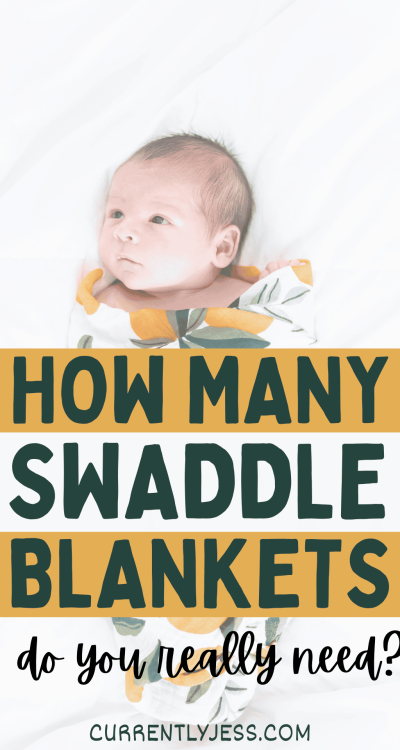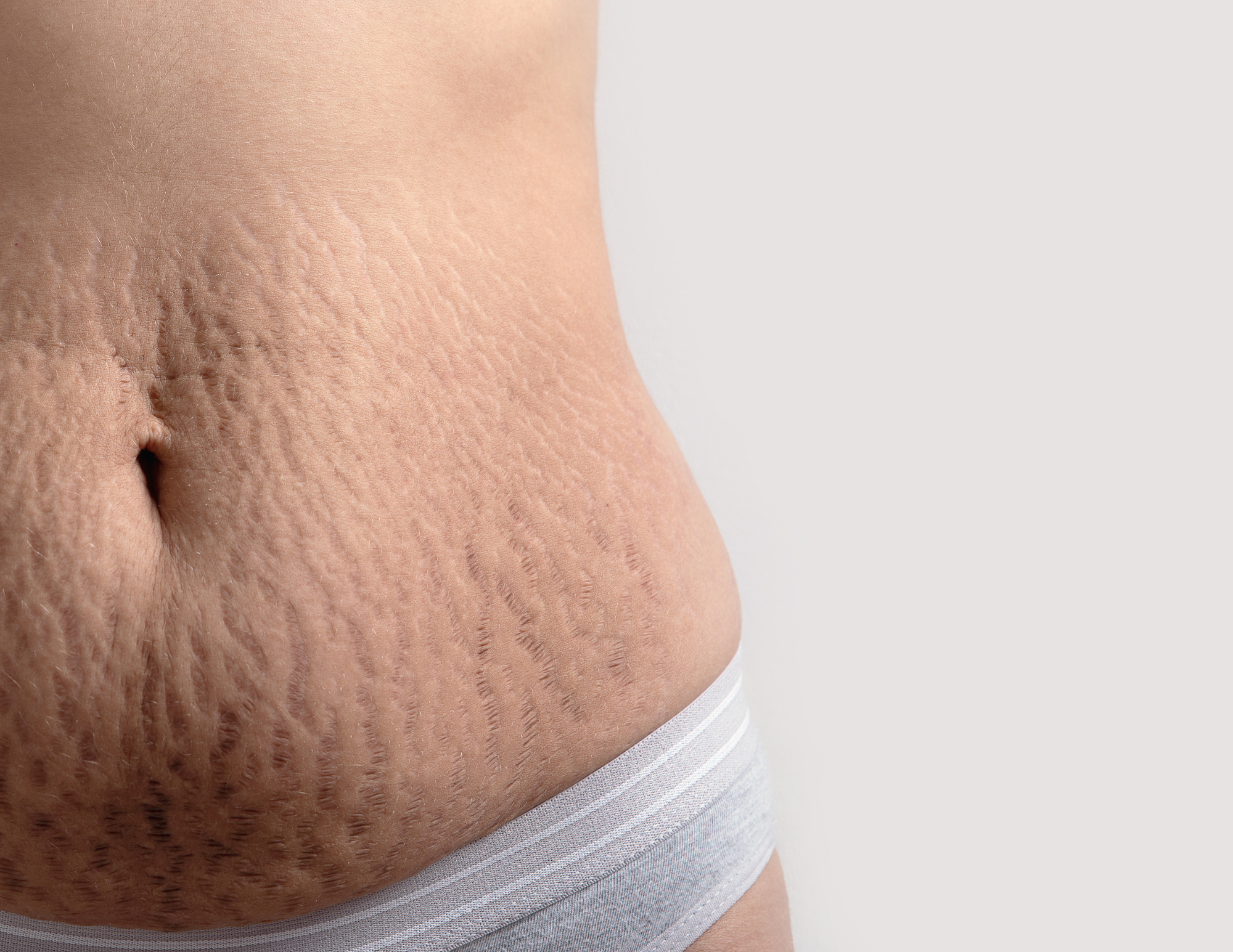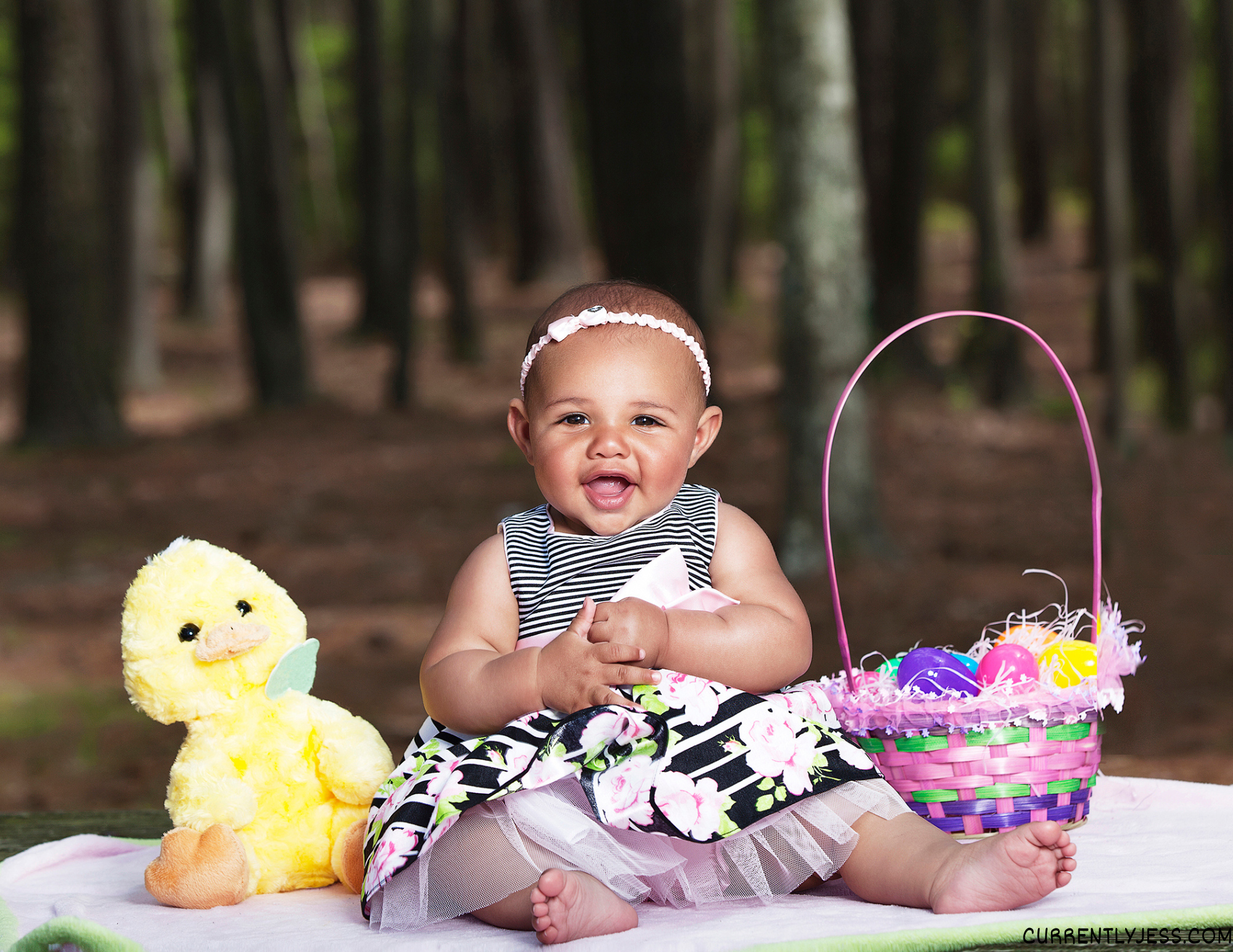Are you knee-deep in your baby registry decisions trying to make sure you’ve checked off every single must-have for your soon-to-be little one? Yup, I’ve been there – staring at that overwhelming list and thinking, “But really, how many swaddle blankets do I need for my baby?”
It’s like trying to guess how many jellybeans are in the jar. Too few and you’re constantly doing laundry; too many and you’re left wondering if you’re inadvertently starting a swaddle blanket collection. Trust me, navigating through the swaddling techniques and baby essentials checklist is an adventure in itself.
Today we will be talking about all things swaddle blankets. How many you need, what types there are out there, and some swaddling safety tips. Plus there will be several frequently asked questions at the end. I hope you will come out of this on the other end confident you know exactly how to handle swaddling your baby to survive those first few weeks with a newborn!
Let’s get to it!

Disclaimer: This post may contain affiliate links. If purchases are made through these links, I may receive a small commission at no additional cost to you. Thank you for supporting this site.
What Is a Swaddle Blanket?
A swaddle blanket is a specially designed wrap that snugly cocoons your baby, mimicking the feeling of being in the womb. It provides comfort and security, helping your little one feel calm and relaxed. Using a swaddle blanket during sleep times can promote better sleep for your baby by preventing the Moro startle reflex and promoting a sense of warmth and safety. It’s a simple yet effective tool for soothing your baby and encouraging peaceful sleep.
Remember, with any blankets used for babies, be sure to follow the safe sleep practices from the American Academy of Pediatrics to prevent SIDs.
Considerations For How Many Swaddles You Need
Material
Weather and where you live are important are important considerations on what types of swaddles you buy, and ultimately how many you will need. If you live in warmer weather, you will want to purchase thinner materials like muslin swaddles. But for winter babies or if you live in colder climates, you will want thicker material like traditional flannel swaddles to keep them warm in the colder months. And if your baby will be a combo of both you may need a few more than normal.
Size
Some babies will be in swaddles for just a few weeks, others may continue to use them for several months. Also swaddle blankets come in a variety of sizes as do the fitted Velcro swaddles which depend more on baby’s age.
How often you plan to do laundry?
Babies create a lot of laundry, that is a well-known fact! So when deciding how many swaddle blankets to buy consider how often you plan on (or are willing to) do laundry. If it’s only once a week you may need to buy more. But if you think you’ll stay on top of all the blowouts and spills pretty regularly, you may not need as many.
How Many Swaddles Do You Really Need?
Now that we’ve gone through the main points, you still may not know exactly how many swaddles you need. My personal opinion is about 4-8 should be a reasonable amount, especially if you are aiming for a more minimalist supply.
This allows you to have about 1 per day of the week (depending on your laundry plans) and a spare or two for unexpected occurrences.
I will be honest; I had a whole drawer full of swaddle blankets some of which were probably only used once or twice. (If I had to estimate I had easily 15-20 blankets) There is some validity in figuring out which type you like, but if you plan on doing this maybe just purchase one or two of each and then buy more when you decide.
Different Types of Swaddle Blankets
There are several different types of swaddle blankets, each with their own specific benefits. Here are the four main types of swaddles:
Traditional Flannel Swaddle Blankets
These are the blankets older women in your family likely refer to as receiving blankets. Traditional flannel swaddle blankets are typically a standard square shape and come in all sorts of fun patterns and colors. These are typically thicket blankets so be careful using these in warmer weather.
Muslin Swaddle Blankets
Muslin swaddles are known for being very lightweight and breathable perfect for warmer climates. The fabric is loosely knit cotton and do have a slight stretch too them making it easier to get that snug wrap.
Stretchy Swaddle Blankets
Stretchy swaddles are most commonly made of bamboo or jersey knit fabrics. These are by far my favorite because they are so easy to get a snug wrap around baby and don’t come unswaddled as easily. The swaddles created by a fellow nurse at Lou Lou and Company are by far my absolute favorite.
Velcro Swaddles
While Velcro swaddles aren’t quite blankets, these are beloved by so many parents that find it so much easier to keep their baby snuggled in especially at night. There are many brands of Velcro swaddles, but our favorite is the Swaddle Me brand. There are just too many cute prints and designs to choose from.
Why Swaddle Your Baby?
Now after we’ve been chatting about swaddling non-stop, it’s easy to wonder if it’s really worth all this fuss. I promise you from personal experience it truly is! Here are the top four reasons why using a swaddle for your baby can be beneficial:
1. Lessens the startle reflex (Moro Reflex)
Swaddling helps suppress a newborn baby’s innate startle reflex, also called the Moro reflex, with accord to Mount Sinai is “a normal reflex for an infant when he or she I startled or feels like they are falling.” Infants often display this by having a startled look and their arms will fling out to the sides with their palms up.
While it is a normal reflex, swaddling can lessen its occurrence and prevent your baby from being woken up by it.
2. Prevents baby from scratching themselves
Those teeny tiny nails may be adorable, but they sure are sharp! Luckily, swaddling acts like a protective shield, keeping those little hands away from their delicate skin. Say goodbye to accidental scratches and hello to baby’s soft, smooth skin.
3. Helps regulate body temperature
Newborn babies have very little body fat and can struggle with temperature regulation, especially in those first few weeks. When they aren’t skin-to-skin, swaddling can help give them an extra layer of warmth to keep their temperature normal.
4. Gives them a safe and secure feeling
Inside your womb, babies are used to feeling snuggled up and cozy. While it isn’t quite the same, swaddling helps replicate this feeling and can help ease their transition into the real world.
Swaddling Safely: Top Tips Every Parent Should Know
While swaddling is very comfortable and soothing for your baby, it can be dangerous if not done properly. Here are some safety tips for using a swaddle blanket:
- Wash before using: Just like with all your baby’s other blankets, and clothing, it’s essential to wash swaddles before their first use. New items often contain chemicals, dyes, dust, and allergens from the store or warehouse. Washing them beforehand ensures that these potential irritants are removed, providing a clean and safe environment for your baby.
- Secure but not too tight: Ensure the swaddle is snug enough to prevent unraveling but not too tight to restrict your baby’s movement or breathing. A snug swaddle helps your baby feel secure, but it’s essential to leave enough room for natural movement, especially around the hips to prevent hip dysplasia.
- Position arms correctly: Position your baby’s arms either by their sides or across their chest before swaddling to mimic the natural position in the womb. This helps prevent your baby from accidentally freeing their arms and waking themselves up.
- Avoid overheating: Opt for lightweight, breathable fabrics to prevent your baby from overheating while swaddled. Avoid any polyester or thicker fabrics to keep the baby at a comfortable temperature.
- Stop swaddling when rolling over: Once your baby shows signs of rolling over it’s time to transition out of swaddling. Swaddling can restrict movement and increase the risk of suffocation if your baby rolls onto their stomach while swaddled and can’t use their arms.
- Place baby on their back: Always place your swaddled baby on their back. Swaddling can increase the risk of overheating or suffocation if your baby sleeps on their stomach or side while swaddled.
How to Dress Baby for the Swaddle?
It can be easy to worry about your baby when deciding what to put them in under their swaddle. You want to find that perfect balance between hot and cold so they are comfortable and can sleep safely. Depending on the season your baby was born in, you may have to adjust the clothing underneath.
During warmer weather, opt for a lightweight onesie paired with a breathable muslin or lighter fabric swaddle blanket. This combination keeps your little one cozy without overheating.
As the temperatures drop, switch to a snug, long-sleeved bodysuit paired with a warmer swaddle, like one made from soft flannel. Remember to keep an eye on your baby for any signs of sweating, as this can indicate if they’re feeling too warm. By dressing your baby properly under their swaddle, you’re setting them up for a comfortable and restful sleep.
Other Great Swaddle Blanket Uses
Swaddle blankets are one of the most versatile baby products you will own. Check out these other uses and you will see why I recommend having several on hand:
- Nursing cover: Use as a breathable cover for discreet breastfeeding while out and about.
- Tummy time mat: Lay down a swaddle blanket for a soft and comfortable surface during tummy time play sessions.
- Playtime prop: Use as a prop for peek-a-boo or other interactive playtime activities to entertain your little one.
- Burp cloth: Keep a swaddle handy for quick cleanup of spit-up and spills during feeding times.
- Stroller or car seat cover: Use as a lightweight cover to shield your baby from the sun, wind, or distractions while on the move.
- Diaper changing pad: Lay down a swaddle blanket as a clean surface for diaper changes while on-the-go.
FAQs on Swaddle Blankets
Stepping into the grand adventure of parenting can feel a bit like navigating a maze blindfolded. But worry not! When it comes to swaddling your precious bundle, I’ve got you covered with answers to those burning questions. It’s all about making sure your baby is snug as a bug, without the fuss.
What types of swaddles are best?
Between muslin swaddles, stretchy wraps, and Velcro swaddles, there’s no one-size-fits-all. Muslin swaddles are breathable and versatile, perfect for a light cover or a tight swaddle. Stretchy swaddles give that snug fit, while Velcro ones offer convenience for those less confident in their swaddling techniques. You may have to try a few out to figure out which is the right fit for you!
How many swaddle blankets do I need?
It’s like asking how many diapers you’ll need – enough to avoid constant laundry! Starting with 4-8 swaddles strikes a balance between being prepared and not overcrowded.
Is swaddling comfortable for my baby?
Absolutely! Swaddling mimics the cozy, tight feeling of the womb, helping to soothe and comfort your baby. Plus, it can aid in better sleep by preventing the startle reflex.
How many swaddle blankets do I need for the hospital?
When packing your hospital bag, you’ll want to make sure you have what you need but not over pack. Personally I wouldn’t bring any swaddles unless you plan on taking some pictures with them in the hospital. In that case maybe bring just one! You will probably be doing skin to skin most of your hospital stay so there isn’t much need for swaddles.
How long should I swaddle my baby?
As previously mentioned, you should stop swaddling your baby before they start to show signs of trying to roll over. This is going to be different for every baby, but a good average is 2-4 months.
In wrapping up, determining how many swaddles you’ll need for your newborn involves considering factors like frequency of use and personal preferences. There are various types of swaddles to choose from, including muslin blankets, stretchy wraps, and swaddle wraps with Velcro or zipper closures. Swaddling is a time-tested method for promoting better sleep and soothing babies, but it’s crucial to follow safety guidelines. Ultimately, finding the right swaddle for your baby is about meeting their needs and preferences. Happy swaddling!








